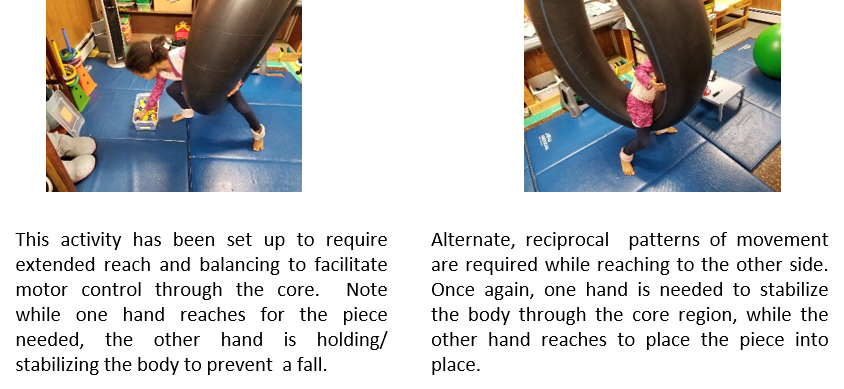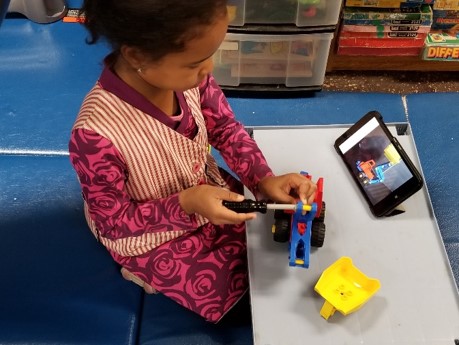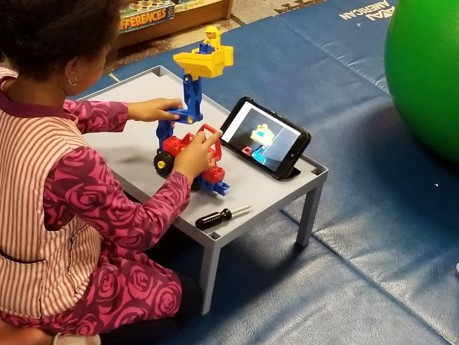Bilateral Motor Control refers to incorporating use of both sides of the body during motor activities. The processes are also commonly referred to as Bilateral Motor Integration. Typically, bilateral motor control refers to incorporating either symmetrical or reciprocal motor patterns. An example of symmetrical motor patterns is shown above as the children lift both arms of their bodies in a joyous expression. An example of reciprocal motor patterns is shown below as the children perform alternating patterns involving both sides of their bodies while stabilizing themselves through their core regions.
Notice that even though these postures are asymmetrical, there is balance around the core. The weight of the body parts has been evenly distributed so that the resulting postures are steady.

Many children who have coordination deficits show poor bilateral motor control, and have difficulty using both sides of their bodies’ in either symmetrical or reciprocal motor patterns. This impacts self care skills at home, such as:
- using both hands to pull up pants or socks while dressing
- using one hand to hold a button hole open while the other hand pushes the button through the hole
- holding one half of a shoe lace still with one hand, while the other hand wraps the corresponding half of the lace into a loop
Activities at school are also impacted during classroom activities such as:
- using one hand to hold a paper still while the other hand manipulates a pencil, crayon, or pair of scissors
- using one hand to hold a ruler still while the other hand uses pencil to draw a line of specified distance
Caretakers such parents, teachers and therapists can intentionally build bilateral motor patterns of movement into remedial activities for the child with sensory processing dysfunction by taking the whole body into account as they prepare for “play”.

Notice that the entire body is involved in creating the bilateral motor patterns and in stabilizing the body around the core, in much the same way as shown with the silhouettes.
This type of preparatory motor activity serves to facilitate bilaterality throughout the trunk, and sets up the upper extremities to work in bilateral patterns as well.

While one hand manipulates the tool, the other hand is involved in stabilizing the fitting.

While one hand stabilizes the base, the other hand is involved in adjusting angles and heights. No prompting needed. The preparatory activity did its job!


Comments are closed.